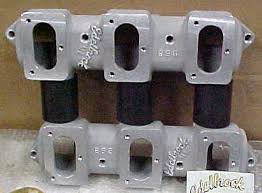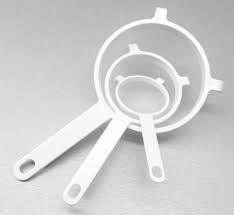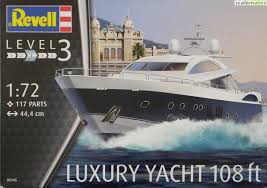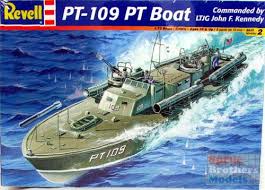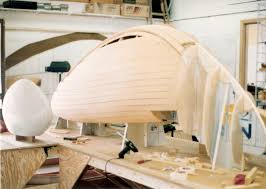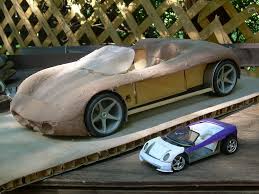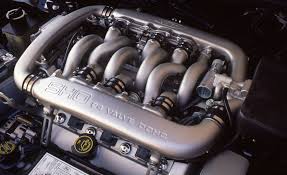-
Posts
38,194 -
Joined
-
Last visited
Content Type
Profiles
Forums
Events
Gallery
Everything posted by Ace-Garageguy
-

Hobbico - BANKRUPT!
Ace-Garageguy replied to niteowl7710's topic in General Automotive Talk (Trucks and Cars)
I figure that, having read so much about "artistic interpretation" from modelers who have nothing but disdain for accuracy, either historical, visual, or technical, coupled with the prevailing attitudes that "a REAL modeler can fix whatever's wrong" and the constant griping about price, the smart and business-savvy Germans will introduce a line of Palmer-quality kits that cost $5. That should satisfy the vocal majority of the US model car market nicely. -
Just to clarify...the AMT '53 Ford kit manifold is essentially two log manifolds with balance pipes running between the log plenums...a relatively common setup, as shown below. The OP manifold is an entirely different beast, extremely rare...but I know nobody cares. You're welcome.
-
Not Dodge. Chrysler 331 / 354 / 392, cast manifold by Elelbrock. I've never seen one in scale. Fits: 1951-58 Chrysler Hemi Engines. Edlebrock X3 Tarantula one-piece aluminum. Definitely a unique manifold! This aluminum manifold features a 6 carburetor cross-flow design.
-
Japanese and US "domestic market", respectively.
-

Straining/Filtering Paint
Ace-Garageguy replied to Miatatom's topic in Model Building Questions and Answers
Autobody and paint stores have giveaway disposable paint strainers. The filtering medium is fine nylon mesh. You can also use fine nylon cooking strainers. Wash in lacquer thinner, never need to replace 'em. If there's a female in your world, old nylon hose (stockings) work very well too. 100% free if there's a donor around. Rubber-band a section of nylon stocking to the top of a container, depress the center, strain away. -

Something on a Model A firewall ?
Ace-Garageguy replied to Greg Myers's topic in General Automotive Talk (Trucks and Cars)
Yup, that's what I found. The location is the same as the non-indented firewall for the fuel outlet from the tank. -
Excellent advice. I'd tend to stay away from "bondo" (polyester) types of fillers for this, as they can warp during initial cure if the substrate isn't absolutely rigid.
-

Something on a Model A firewall ?
Ace-Garageguy replied to Greg Myers's topic in General Automotive Talk (Trucks and Cars)
Thanks Greg. I learned something. -
Looks great. That's really a nice static kit in my opinion, and yours looks well used but well maintained. The silver painted smokebox and firebox were seen on a lot of steam locomotives. Of course the side rods were usually bare metal when the engines were in service, for easier crack detection, and had to be wiped down frequently. Yours look good. The PRR (no Big Boys there) is said to have painted their side rods with a white substance that was supposed to enhance crack detection, but I've not researched this thoroughly. Beautiful machine.
-

Something on a Model A firewall ?
Ace-Garageguy replied to Greg Myers's topic in General Automotive Talk (Trucks and Cars)
I've never seen that on an A firewall either, but those shots sho' do point out just how wrong the Revell '30 coupe really is... -

What non-auto model did you get today?
Ace-Garageguy replied to chunkypeanutbutter's topic in The Off-Topic Lounge
Got a couple of small ships to further the HO layout theme of post-Atlas Shrugged-apocalypse industrial complex. First one is the (widely incorrectly referred to as 1/72 scale) Lindberg Coast Guard patrol boat. An interesting commentary on failed math-teaching in the schools, as it's clearly labeled on the box as 1"=6' 9 1/2", which works out to exactly 1:81.5 scale (though SOME boxes are marked 1:82 scale!)...close enough to HO scale of 1:87 to work reasonably well. Interestingly also, the included figures are SMALLER than correct 1/87 HO figures, even though the model is a nominally LARGER scale. Math has apparently been too hard for adult professionals for many decades. The plan is to have her out of the water, like so... ...under repair/refit. The other one I got is Revell's 1/72 108 foot "luxury yacht". Taking the kit's existing dimensions and converting to HO makes her 130 feet long in 1/87 scale. She'll be modified to represent the fast-attack "pirate" ship of Ragnar Danneskjöld in Ayn Rand's novel. Though the ship is never named or described in the book, at 130 feet, the model could represent a steel-hulled ship large and heavy enough to be armed with a decent size offensive gun, and torpedoes. The Coast Guard boat has a 20mm defensive gun, so possibly a correctly-scaled version of that will grace this ship's foredeck, along with a significantly larger offensive weapon. The M101 105mm medium howitzer seems to be a good candidate. At around 5000 pounds, with a 7'7" barrel, and having a compact recoil system, it could be adapted for marine use, particularly effective against unarmed civilian shipping. The torpedo launch tubes will be modeled after the units in this 1/72 kit, which is on the way... -
New dwerp in the neighborhood with a 3-cylinder (missing on one) flatulence-can-equipped Civic that he seems Hades-bent on blowing up as he races back and forth in front of my house at redline. Can't drive worth doodly, misses shifts entirely, has no idea where to downshift going into a turn or upshift coming out, alternates between bouncing off the rev limiter and lugging the poor little engine...on his 15 daily trips to the corner Quickie Mart. I can tolerate (even enjoy) the sound of a competent driver hammering a well set-up little car, but this guy's a moron. M O R O N. Lord, give me strength.
-
Once the nukes start falling, it won't be a priority issue.
-
600cc water cooled 2-cylinder Kawasaki, mounted behind the driver and just ahead of the rear wheel. Though I designed the exterior in about 1985 (with no particular drive-train in mind) I modified the idea in 1995 to run on CNG (as a publicity vehicle for the Natural Gas Vehicle Coalition and other proponents of CNG as a vehicle fuel). For the sake of simplicity at this point, the first one will run on gasoline. I had just started talking to Thoikol about fabricating "conformable" high-pressure CNG tanks when I ran out of funding back in 1997. The design was also done with the idea of re-configuring it to run battery-electric, or hybrid-electric fairly easily. Batteries in 1985 were mostly very heavy lead-acid, and not well suited to a hyper-light vehicle. Battery technology has now advanced to the point that all-electric propulsion with reasonable range is feasible...solar recharging, of course.
-
What's really a shame about the car now...like so many "restorations" and "reconstructions" and "tributes"... is that the rebuilder missed so many of the subtleties of proportion and line that made the original a good-looking machine, and the re-do is half-backside excrement. See how many of the just flat wrong things you can find about the "restored" version.
-

Autoquiz 372 - Finished
Ace-Garageguy replied to carsntrucks4you's topic in Real or Model? / Auto ID Quiz
Just in under the wire. -

Micro Balloons questions.
Ace-Garageguy replied to HotRodaSaurus's topic in Model Building Questions and Answers
I can't imagine what you found for $80, but you can get a pound of the stuff for $8.75 from this site: http://www.aircraftspruce.com/catalog/cmpages/bubbles.php There is NO expiration date. They are simply little glass bubbles. Glass doesn't expire. The "mix ratio" works like this: You mix your epoxy, then you add micro until you get the consistency you want. WEAR A RESPIRATOR. (The mixing time is one of the reasons you want an epoxy that doesn't go off in 5 minutes. It takes a few minutes to get the consistency just right...which is why I mix MINE on a gram scale, after having done a lot of careful experimenting, and record keeping. I can duplicate an exact mix time after time after time.) For BEST adhesion and sandability, I STRONGLY suggest you use the West System epoxies listed above. Kept in the original, clean, well-sealed containers, they'll last for a long time. I CAN NOT RECOMMEND ANY OTHER EPOXY FOR THIS APPLICATION. NOTE: You really don't need to go to all the trouble of acquiring and mixing microballoon/epoxy filler unless you need an exceptionally high-performance product for heavy applications on radical custom work like my examples shown above. NOTE: If you just want a "non-shrinking" filler to replace the Squadron one-part LACQUER putty for GENERAL use, get this BONDO #801 "PROFESSIONAL" 2-PART polyester from your local auto parts store: -
Most new technologies or products take more time and more money to develop than is estimated, and ramping up production is always expensive. With increased acceptance and production, costs always come down. This is Manufacturing 101. The thing about Musk is that he DOES things, rather than endlessly yapping yapping yapping for decades with little to show for all the expended hot air.


